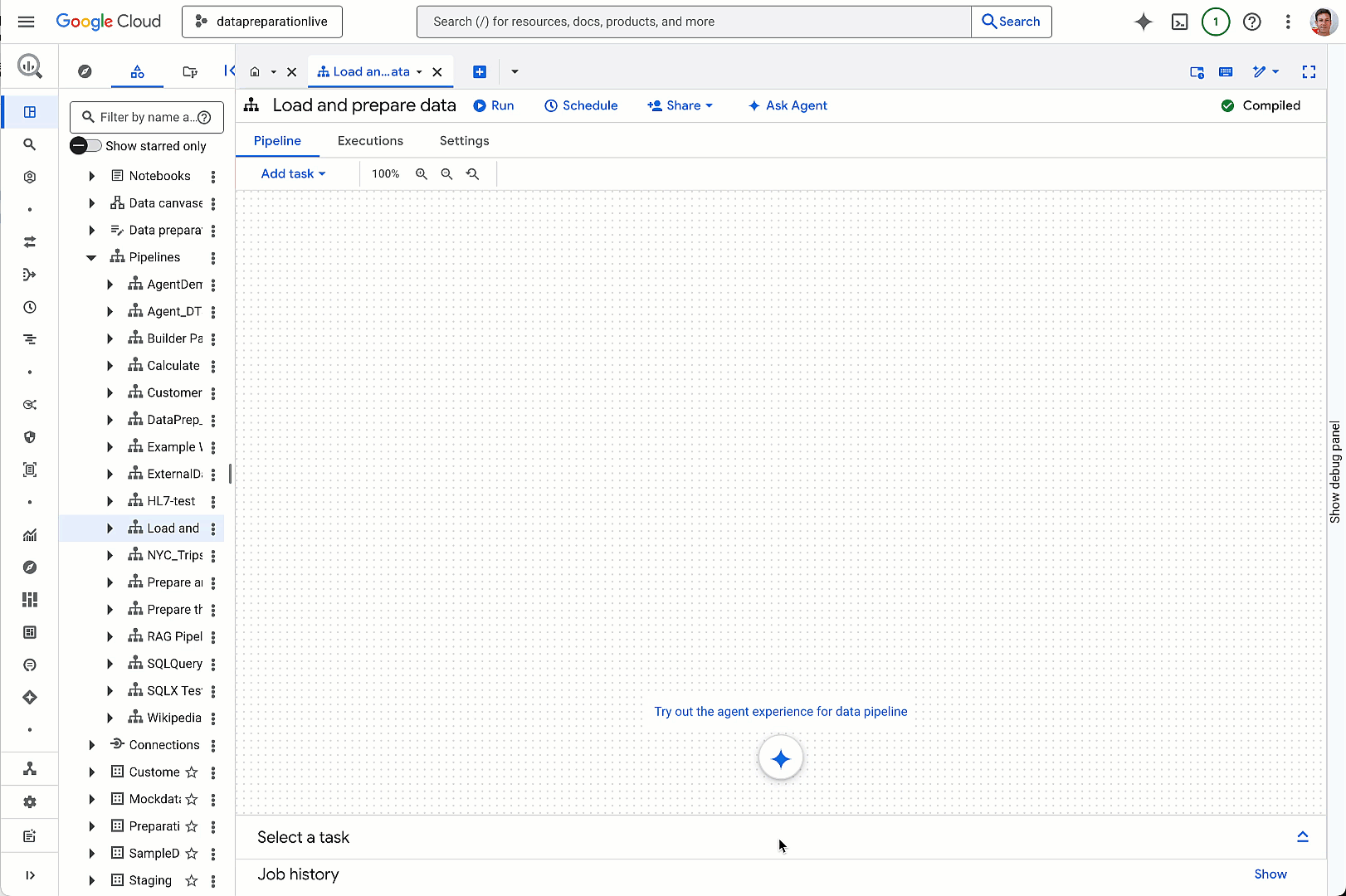GCP – Widespread Data Theft Targets Salesforce Instances via Salesloft Drift
Written by: Austin Larsen, Matt Lin, Tyler McLellan, Omar ElAhdan
Introduction
Google Threat Intelligence Group (GTIG) is issuing an advisory to alert organizations about a widespread data theft campaign, carried out by the actor tracked as UNC6395. Beginning as early as Aug. 8, 2025 through at least Aug. 18, 2025, the actor targeted Salesforce customer instances through compromised OAuth tokens associated with the Salesloft Drift third-party application.
The actor systematically exported large volumes of data from numerous corporate Salesforce instances. GTIG assesses the primary intent of the threat actor is to harvest credentials. After the data was exfiltrated, the actor searched through the data to look for secrets that could be potentially used to compromise victim environments. GTIG observed UNC6395 targeting sensitive credentials such as Amazon Web Services (AWS) access keys (AKIA), passwords, and Snowflake-related access tokens. UNC6395 demonstrated operational security awareness by deleting query jobs, however logs were not impacted and organizations should still review relevant logs for evidence of data exposure.
Salesloft indicated that customers that do not integrate with Salesforce are not impacted by this campaign. There is no evidence indicating direct impact to Google Cloud customers, however any customers that use Salesloft Drift should also review their Salesforce objects for any Google Cloud Platform service account keys.
On Aug. 20, 2025 Salesloft, in collaboration with Salesforce, revoked all active access and refresh tokens with the Drift application. In addition, Salesforce removed the Drift application from the Salesforce AppExchange until further notice and pending further investigation. This issue does not stem from a vulnerability within the core Salesforce platform.
GTIG, Salesforce, and Salesloft have notified impacted organizations.
Threat Detail
The threat actor executed queries to retrieve information associated with Salesforce objects such as Cases, Accounts, Users, and Opportunities. For example, the threat actor ran the following sequence of queries to get a unique count from each of the associated Salesforce objects.
SELECT COUNT() FROM Account;
SELECT COUNT() FROM Opportunity;
SELECT COUNT() FROM User;
SELECT COUNT() FROM Case;Query to Retrieve User Data
SELECT Id, Username, Email, FirstName, LastName, Name, Title, CompanyName,
Department, Division, Phone, MobilePhone, IsActive, LastLoginDate,
CreatedDate, LastModifiedDate, TimeZoneSidKey, LocaleSidKey,
LanguageLocaleKey, EmailEncodingKey
FROM User
WHERE IsActive = true
ORDER BY LastLoginDate DESC NULLS LAST
LIMIT 20Query to Retrieve Case Data
SELECT Id, IsDeleted, MasterRecordId, CaseNumber <snip>
FROM Case
LIMIT 10000Recommendations
Given GTIG’s observations of data exfiltration associated with the campaign, organizations using Drift integrated with Salesforce should consider their Salesforce data compromised and are urged to take immediate remediation steps.
Impacted organizations should search for sensitive information and secrets contained within Salesforce objects and take appropriate action, such as revoking API keys, rotating credentials, and performing further investigation to determine if the secrets were abused by the threat actor.
Investigate for Compromise and Scan for Exposed Secrets
-
Search for the IP addresses and User-Agent strings provided in the IOCs section below. While this list includes IPs from the Tor network that have been observed to date, Mandiant recommends a broader search for any activity originating from Tor exit nodes.
-
Review Salesforce Event Monitoring logs for unusual activity associated with the Drift connection user.
-
Review authentication activity from the Drift Connected App.
-
Review UniqueQuery events that log executed SOQL queries.
-
Open a Salesforce support case to obtain specific queries used by the threat actor.
-
Search Salesforce objects for potential secrets, such as:
-
AKIAfor long-term AWS access key identifiers -
Snowflakeorsnowflakecomputing.comfor Snowflake credentials -
password,secret,keyto find potential references to credential material -
Strings related to organization-specific login URLs, such as VPN or SSO login pages
Run tools like Trufflehog to find secrets and hardcoded credentials.
Rotate Credentials
-
Immediately revoke and rotate any discovered keys or secrets.
-
Reset passwords for associated user accounts.
-
Configure session timeout values in Session Settings to limit the lifespan of a compromised session.
Harden Access Controls
-
Review and Restrict Connected App Scopes: Ensure that applications have the minimum necessary permissions and avoid overly permissive scopes like
fullaccess. -
Enforce IP Restrictions on the Connected App: In the app’s settings, set the ‘IP Relaxation’ policy to ‘Enforce IP restrictions’.
-
Define Login IP Ranges: On user profiles, define IP ranges to only allow access from trusted networks.
-
Remove the ‘API Enabled’ Permission: Remove the ‘API Enabled’ permission from profiles and grant it only to authorized users via a Permission Set.
Additional instructions and updates are available on the Salesloft Trust Center.
Acknowledgments
We would like to thank Salesforce, Salesloft, and other trusted partners for their collaboration and assistance in responding to this threat.
IOCs
A collection of indicators of compromise (IOCs) is available in a Google Threat Intelligence (GTI) collection for registered users.
|
Indicator Value |
Description |
|
Salesforce-Multi-Org-Fetcher/1.0 |
Malicious User-Agent string |
|
Salesforce-CLI/1.0 |
Malicious User-Agent string |
|
python-requests/2.32.4 |
User-Agent string |
|
Python/3.11 aiohttp/3.12.15 |
User-Agent string |
|
208.68.36.90 |
DigitalOcean |
|
44.215.108.109 |
Amazon Web Services |
|
154.41.95.2 |
Tor exit node |
|
176.65.149.100 |
Tor exit node |
|
179.43.159.198 |
Tor exit node |
|
185.130.47.58 |
Tor exit node |
|
185.207.107.130 |
Tor exit node |
|
185.220.101.133 |
Tor exit node |
|
185.220.101.143 |
Tor exit node |
|
185.220.101.164 |
Tor exit node |
|
185.220.101.167 |
Tor exit node |
|
185.220.101.169 |
Tor exit node |
|
185.220.101.180 |
Tor exit node |
|
185.220.101.185 |
Tor exit node |
|
185.220.101.33 |
Tor exit node |
|
192.42.116.179 |
Tor exit node |
|
192.42.116.20 |
Tor exit node |
|
194.15.36.117 |
Tor exit node |
|
195.47.238.178 |
Tor exit node |
|
195.47.238.83 |
Tor exit node |
Read More for the details.



